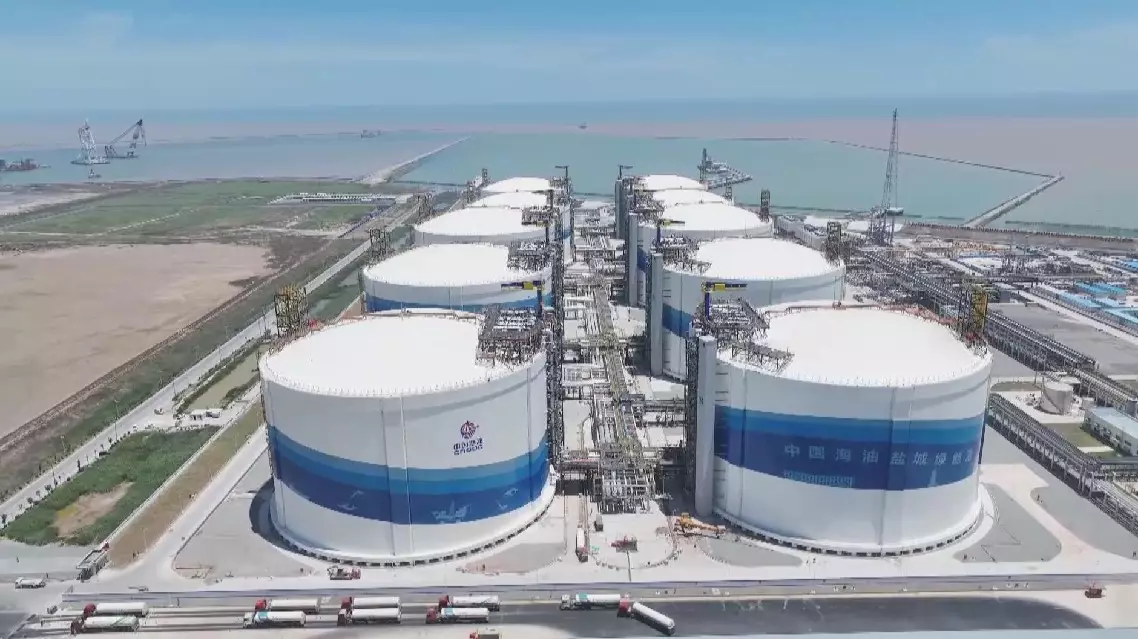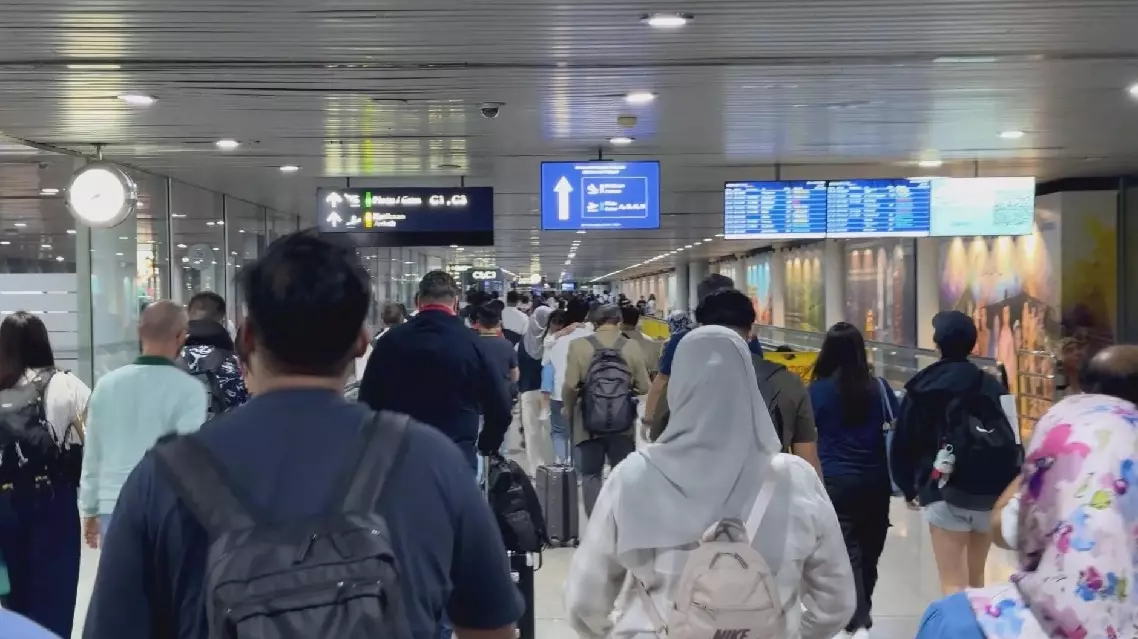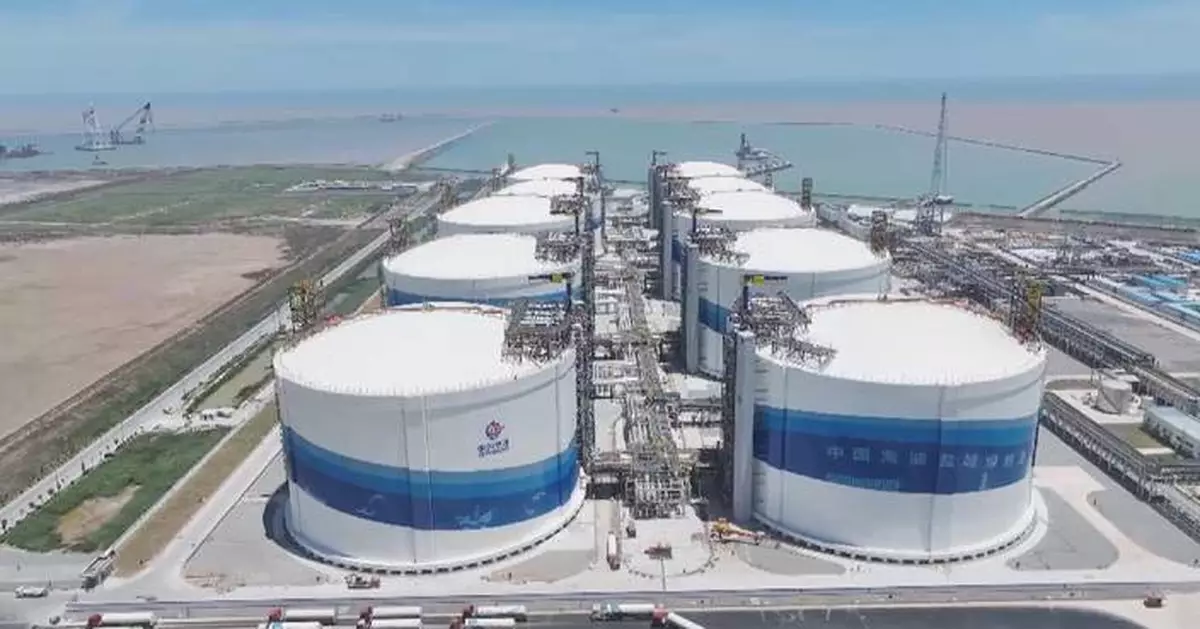The building of the Green Energy Port -- the world's largest liquefied natural gas (LNG) storage tank cluster so far -- was completed in Yancheng City of east China's coastal province of Jiangsu on Sunday, after three years of independent design and construction.
The Green Energy Port boasts six world's largest 270,000 cubic meter LNG storage tanks and four 220,000 cubic meter storage tanks, totaling 2.5 million cubic meters.
The construction of the Green Energy Port was undertaken by China National Offshore Oil Corp (CNOOC), the country's top offshore oil and gas producer.
In an interview with China Central Television, Li Feng, deputy general manager of CNOOC Gas Power, said the project is crucial to improving energy security in the Yangtze River Delta region in east China and supporting green development in the country.
"As a key project in the country's natural gas production, supply, storage and sales system, the Green Energy Port connects major natural gas transportation networks, including those of natural gas transportation from western to eastern regions and the China-Russia eastern natural gas pipeline," Li said.
"Meanwhile, it also operates the business of gas delivery using tank trucks, keeping supplying natural gas to provinces such as Jiangsu, Henan, Anhui and Shandong, thus contributing to maintaining energy security in the Yangtze River Delta region," he said.
The project is designed to handle 6 million tons of LNG per year, equivalent to 8.5 billion cubic meters of gaseous natural gas, which can be used for approximately 28 months to support the livelihood of the people in Jiangsu Province.
China is expanding natural gas storage capabilities to ensure a reliable and sustainable energy future as part of its "carbon peaking and neutrality" commitment, planning to establish six major gas storage centers across the country, with a total of 50 gas storage facilities and an estimated working gas volume exceeding 100 billion cubic meters.

Construction of world's largest LNG storage tank cluster completed in east China's Jiangsu
Malaysia has extended its visa-free entry for Chinese citizens for another five years, a move that has already led to a sharp rise in tourist arrivals and reinforced economic and diplomatic ties with China.
The initiative follows China's decision to waive visa requirements for Malaysian travelers in late 2023, triggering a two-way tourism boom between the two countries.
Popular destinations like the Batu Caves near Kuala Lumpur are now filled with Chinese tourists taking advantage of the simplified entry process.
"The whole process is very simple. After arriving in Kuala Lumpur, we could use the self-service channel to tour Malaysia," said Nancy Niu, a Chinese tourist from Shandong.
For many, the ease of entry has changed travel plans.
"We'd originally planned to travel within China. But when we heard about the visa exemption, we decided to go to Malaysia. That made it very convenient. If you want to come during the May Day holiday, or National Day holiday, just for a few days, there's no need to apply for a visa, you can just come," said Louie Zhang, a Chinese visitor from Shenzhen.
Returning travelers are also noticing the difference.
"When I came to Malaysia before, there were too many steps. We had to queue in very long lines. Now, there's basically no queuing. It's very quick to clear immigration," said Wang Xiaofeng, a Chinese visitor from Sichuan.
Tourism operators are welcoming the policy extension as a long-term boost to the industry.
"This extension is very much welcome news because it has always been very good for the industry, looking towards China as one of its main source markets. This is going to mean that we're going to have a lot more time to plan, to really understand the Chinese market and to perhaps even cater to the new, upcoming trends that the Chinese tourists are looking for," said Nigel Wong, president of the Malaysian Association of Tour and Travel Agents.
So far in 2025, the number of Chinese tourists visiting Malaysia has risen by around 30 percent compared to the same period last year, according to Wang.

Chinese tourist arrivals soar as Malaysia extends visa waiver











